
On this day, April 13, 2018, Oregon Governor Kate Brown signed into law SB 1563 which allows illegal aliens access to the Oregon Promise grant which provides assistance to college students.
 Post an Event
Post an Event
| Oregon Citizens Lobby War Room |
| Thursday, April 17, 2025 at 8:30 am |
| Meet at Ike Box for training and updates on legislation. Send testimony, watch hearings, and visit capitol to testify. Legislators and special guests. Every Thursday 8:30am to 3:00pm to June 26. |
| Ike Box, 299 Cottage St NE, Salem (upstairs) |

| Oregon Citizens Lobby War Room |
| Thursday, April 24, 2025 at 8:30 am |
| Meet at Ike Box for training and updates on legislation. Send testimony, watch hearings, and visit capitol to testify. Legislators and special guests. Every Thursday 8:30am to 3:00pm to June 26. |
| Ike Box, 299 Cottage St NE, Salem (upstairs) |

| Campaign Training |
| Friday, April 25, 2025 at 10:30 am |
| Free campaign training for candidates, future candidates, and grassroots activists to help gain the knowledge and skills necessary to run a successful campaign. From 10:30 to 4pm, Lunch provided. Register here: https://bit.ly/WLN-Registration |
| Mt. Hood Resort |

| Oregon Citizens Lobby War Room |
| Thursday, May 1, 2025 at 8:30 am |
| Meet at Ike Box for training and updates on legislation. Send testimony, watch hearings, and visit capitol to testify. Legislators and special guests. Every Thursday 8:30am to 3:00pm to June 26 |
| Ike Box, 299 Cottage St NE, Salem (upstairs) |

| OFF 2-Day Shooting Event |
| Saturday, May 3, 2025 at 10:00 am |
| Oregon Firearms Federation. All proceeds benefits OFF’s legal fund to cover ongoing fight against Measure 114 and efforts to protect your Second Amendment rights. Cost $50 per day, May 3 and 4, 10am to 7pm. Competitions. Special prices. Food & drink provided. 541-258-4440 |
| Indoor Shooting Range, 580 S Main, Lebanon, OR |

| Oregon Citizens Lobby War Room |
| Thursday, June 26, 2025 at 8:30 am |
| Meet at Ike Box for training and updates on legislation. Send testimony, watch hearings, and visit capitol to testify. Legislators and special guests. Every Thursday 8:30am to 3:00pm to June 26. |
| Ike Box, 299 Cottage St NE, Salem (upstairs) |
Judge Marshall and Judge Burge are retiring
Oregon Governor Kate Brown has announced that she will appoint Steve Hoddle and Robert Johnson to the Douglas County Circuit Court. Hoddle will fill Position 2, replacing Judge William Marshall, and Johnson will fill Position 4, replacing Judge Frances Burge.
Brown congratulated Judge Marshall and Judge Burge on their planned retirements, and thanked them for their service. Hoddle and Johnson’s appointments are effective immediately.
Last month, Hoddle and Johnson each won a majority of votes in their judicial elections in Douglas County. The Governor’s appointments will allow both to begin their judicial service before the start of their elected terms on the Douglas County bench.
“Steve Hoddle and Robert Johnson have earned the support of Douglas County voters to become the newest judges on the trial court bench,†said Governor Brown. “I look forward to seeing how both of these skilled lawyers use their experience to serve the people of Douglas County, while continuing to build on the strength of our justice system.â€
A D V E R T I S E M E N T

A D V E R T I S E M E N T
Hoddle has been a prosecutor with the Douglas County District Attorney’s office since 2008 and, for 15 months before that, was a deputy district attorney for the Coos County District Attorney’s office. He grew up in Sherwood and is a graduate of Oregon State University, where he received his bachelor’s degree in 2002, and Willamette University College of Law, where he obtained his law degree in 2006.
Johnson was raised in Oregon and, after attending Umpqua Community College, graduated from Portland State University with his bachelor’s degree in 2011. He obtained his law degree from the University of Oregon School of Law in 2014. After law school, Johnson served as a law clerk with the Douglas County Circuit Court before starting as an attorney at Douglas County Law in Roseburg in 2016. Since 2018, he has been an attorney at the law firm of Dole Coalwell, where he is currently a partner. Johnson is also a board member of the Umpqua Community College Foundation, the Douglas County Parks Advisory Board, and CASA of Douglas County, and a member of the Oregon Government Ethics Commission.
--Bruce Armstrong| Post Date: 2022-06-07 18:26:32 | Last Update: 2022-06-07 18:35:33 |
More gun laws will not stop the illegal use of weapons
The law is nicknamed “Red Flag Law†for when a person exhibits a ‘red
flag’ or other indicator that they may be a harm to themselves, or
others. They can be reported to quickly remove a weapon from
somebody who is at risk.
In the wake of shootings, Mr. Biden used his address to reassure the
nation urging congress to pass a national red flag gun law. In his speech,
he says, “According to new data just released by the Centers for
Disease Control and Prevention, guns are the No. 1 killer of children in
the United States of America.†Searching for confirmation, CDC’s site
says, “Injury is the leading cause of death for children and adults
between the ages of 1 and 45.†No separations for guns, but despite
what Biden said, it is not firearms that is the most danger to children.
Accidents, overdosing and suicide are the top major causes.
The latest data CDC sites is 2020. Oregon ranks in the
second to lowest
out of five categories for firearm deaths and 16 th in the nations based
on population.
Oregon statistics reveal that 13 out of 100,000 were
from firearms. To put it in perspective, the leading cause of death in
Oregon is cancer followed by heart disease and third is accidents. At
number seven is 27 out of 100,000 died of Covid-19, 19 out of 100,000
overdosed, and 4 out of 100,000 were homicide victims. Suicide is ninth
in causes of death. Firearms is not listed in the top 10 causes of death.
Attorney General Ellen Rosenblum put out
a statement reminding
Oregonians that in 2017 the extreme risk protection order (ERPO) was
passed by a narrow margin.
"Many of us are asking how we can better keep Oregonians safe
and keep guns out of the hands of the wrong people. While there
is still a lot of work to do, Oregon has made significant gains to
strengthen our gun safety laws…. the “Extreme Risk Protection
Order†or “Red Flag Law,†allowing courts to take weapons away
from people who are at risk as a danger to themselves or others.
It is my hope that all Oregonians know about these laws so we can
get guns and other weapons away from people who shouldn’t
have them."
Oregon’s Red Flag law limits who can make a request to a concerned
family member, household member, or law enforcement officer. It
involves asking the court for an Extreme Risk Protection Order (ERPO),
which will remove a weapon, or a concealed handgun license, from an
individual who is at risk for suicide or is a danger to others. An Order
also prevents the person from buying additional guns for a one-year
period.
The court must hold a hearing typically the same day or within 24-
hours. The person who requests the petition must appear in person or
by video at the hearing. If the person who is at risk requests a hearing,
then the court must hold an additional hearing within 21 days. If the
judge agrees, all weapons and concealed handgun permits must be
surrendered within 24-hours of issuing the Order. The court must hold a
hearing typically the same day or within 24-hours. The person who
requests the petition must appear in person or by video at the hearing.
A D V E R T I S E M E N T

A D V E R T I S E M E N T
If the person who is at risk requests a hearing, then the court must hold
an additional hearing within 21 days, and the Order is usually effective
for one year.
Thirteen states have adopted forms of red flag laws. Provisions vary by
state on matters such as who can initiate the process, if a warrant is
required, what factors are considered for the firearms to be removed
from possession, how long the guns are restricted, and the process by
which the individual may regain access to the guns. The length of time
that guns are restricted under these extreme risk protection orders
(ERPOs) depends on the circumstances and can usually be extended.
States with red flag laws are claiming a reduction in suicides (by
firearms). In 2013 guns were used in Oregon suicides twice as often as
poison, the second most popular method. The rate of suicide has not
changed per population, but last year, non-medical drugs were listed as
the highest impact on suicide.
What opponents of red flag laws fear is the “foot-in-the-door.â€
Oregon’s law is restrictive, but as Rosenblum says, “there is still a lot of
work to do.†Governor Brown is famous for saying, “we can do better.â€
What does that really mean? More gun laws will not stop the illegal use
of weapons.
--Donna Bleiler| Post Date: 2022-06-06 23:42:14 | Last Update: 2022-06-08 09:01:41 |
They want to attract a “diverse set of candidatesâ€
The Hillsboro City Council
will consider a recommendation from the Hillsboro Budget Committee’s non-Council members to increase monthly service stipends for
the Mayor, Council President, and other Councilors.
Public members of the Budget Committee members discussed the stipends during the Fiscal Year 2022-23 Budget meetings. The remaining Budget Committee members unanimously recommended the following changes:
- Increasing the Mayor’s monthly service stipend from $3,000 to $4,000
- Increasing the Council President’s monthly service stipend from $950 to $1,300
- Increasing each Councilor’s monthly service stipend from $750 to $1,050
If approved by the Council, the Budget Committee’s recommendation to increase the stipends would take effect on June 24, 2022, the first day of the first pay period in 2022-2023.
Stipend Recommendation Basis
Serving on the Hillsboro City Council includes City Council meetings, and committee meetings, as well as periodic meetings with staff. Meetings with constituents and attending community events is also expected of those elected to represent the city.
A D V E R T I S E M E N T

A D V E R T I S E M E N T
According to the city, the Budget Committee’s recommendation to increase the stipends in 2022 is based on factors that include:
- The length of time since any stipend increases have occurred
- Overall stipend history
- Comparisons with other cities
- Balancing public service with family, professional, and personal commitments
- The ability to attract a diverse set of candidates
The City of Hillsboro has now stated that increased stipends will likely create greater opportunities for a more diverse set of people to seek and hold local elected office.
Monthly stipends for the Mayor and Council members are set by resolution and require a Council vote for any adjustment. To avoid conflicts of interest and voting on increases for their respective positions, the Council members will need to vote on whether to approve the recommended service stipend adjustments in two separate resolutions.
--Bruce Armstrong| Post Date: 2022-06-05 10:16:03 | Last Update: 2022-06-05 10:43:07 |
Decriminalizing drugs has failed and overdoses are skyrocketing
Ballot Measure 110 was the hot topic in Oregon’s
House Committee on
Behavior Health last week. In 2020, voters were convinced to
decriminalize drugs and encourage self-help instead of incarceration,
the first in the nation. Then Governor Brown and the Oregon Health
Authority took health decisions away from Oregonians by mandating masks and
vaccinations in the name of the supposed Coronavirus pandemic.
It seems that neither strategy is working out. Testimony from state
officials admitted that decriminalizing drugs has failed and overdoses
are skyrocketing while appropriated funds remain unspent. According
to the Oregon Health Authority, $40 million has been spent and $265
million remains unspent. The Health Justice Recovery Alliance reported
that hundreds of providers, which screen for needs, offer case
management, treatment, housing and other services are waiting for
funds to service 9,200 active methadone patients receiving opioid
treatment from providers.
Oregon’s behavioral health director, Steve Allen, was playing the
waiting game insisting it has strong potential, but the committee wasn’t
buying it, especially with Representative Lily Morgan (R-Grants Pass).
Her community in Oregon House District 3 has seen 700% increase in overdoses and a 120%
increase in deaths.
Oregon went from 280 Opioid deaths in 2019 to 472
in 2020 to 607 in 2021, and 2022 is exceeding 20% higher every month
than last year.
Allen also took a whipping from Secretary of State Shemia Fagan
claiming the change of policy was to improve lives and improve
communities, and instead problems with drug addictions have gotten worse.
From the hearing materials, one thing is evident – there wasn’t one report on
the treatment of individuals. Every report was on handling funds. What
results are taxpayers getting for their money?
Dr. Reginald Richardson, Executive Director of the Alcohol and Drug
Policy Commission (ADPC) reported that Oregon is in the top 10 states
for misuse of drugs, being number one in methamphetamine and Rx
pain drugs, and dead last in access to treatment.
A D V E R T I S E M E N T

A D V E R T I S E M E N T
Developing
subcommittees has been slow and it seems non-productive. ADPC is
working on a pilot with Salem-Keizer School District.
Is it a coincident that overdose deaths have increased over 60% over
the course of the pandemic? Even kids depression rates have doubled
since the onset of the pandemic, and kids have more PTSD, higher rates
of anxiety, more gender confusion, and higher rates of suicide.
Returning to a social environment has seen these kids acting out
through bullying, more violence, with less discipline. Oregon is also in
the lowest group of states for care available to students, and the care
that is available often leads them down a dark path.
Are we looking at the source for solutions or masking the problem with
money? Voters and parents need to seriously consider what kind of
solution will bring permanent results.
--Donna Bleiler| Post Date: 2022-06-05 08:32:33 | Last Update: 2022-06-05 09:09:09 |
A combined effort between ODHS, Jackson County, others
The Collaborative, a center for transformation and collaboration in
service of women and gender diverse individuals,
opened its doors in Medford, Oregon this past month. It is a combined effort between the Oregon Department
of Human Services (ODHS) Child Welfare Division and Self Sufficiency
Programs, Jackson County Community Justice (JCCJ) and
The Pathfinder Network
(TPN). These three agencies will now be housed together with the effort.
"It is inspiring to see the missions of all three agencies coming together to cultivate
such a needed, intentional and innovative impact in this community. I am so proud
of The Collaborative," says
Leticia Longoria-Navarro, Executive Director of the
Pathfinder Network.
The Collaborative says that it's vision is to co-create holistic pathways to integrated and
responsive services and supports. Efforts will focus on:
- Mitigating the impacts of trauma
- Decreasing social isolation for impacted community members
- Preventing misuse of substances
- Employing community-wide approaches to reducing harm associated with
behavioral health issues
- Ensuring access and coordination of services
The Collaborative focused on redesigning the center to foster a safe space for women and "gender diverse individuals".
ODHS states that the voices of individuals who would use the space led the redesign. Former and current participants describe the environment as "safe".
"The Collaborative is a great example of how we are putting the
Child Welfare
Division Vision for Transformation into action by creating a space where children
and families are supported holistically across systems," says Kimberlee Whitney,
Child Welfare District Manager. "Thank you to our partners within ODHS, Pathfinder
Network and Jackson County for making this effort come to life."
Team members from all three agencies will support participants in their engagement
with parole and probation and ODHS through a trauma, gender and culturally
responsive approach and provide peer support in a safe space created to
provide services and support.
A D V E R T I S E M E N T

A D V E R T I S E M E N T
Individuals are welcomed in by team
members into the "living room" and are connected to staff in the building to
assess their needs, connect them to resources, make referrals to other community
resources, sign them up for group services and events at the center and provide on
the spot peer support.
The Collaborative says they are a one stop shop for services that are working toward
eliminating the barriers of access to services by working to stabilize families during stressful times. The goal is to see better
outcomes by providing evidence-based support and
services.
"By putting people first, the outcomes will follow. We know that relationships,
connections and focusing on strengths lead to people being successful,†says Eric
Guyer, Director of Jackson County Community Justice. “To do this work in partnership with
professionals with lived experience is truly innovative.â€
About the ODHS Child Welfare Division
The Oregon Department of Human Services, Child Welfare Division is committed to
transforming itself to better support the individual needs of families and to best
serve Oregon’s children and young people.
You can report child abuse to the Oregon Child Abuse Hotline by calling 1-855-503-SAFE
(7233). This toll-free number allows you to report abuse of any child or adult to the
Oregon Department of Human Services, 24 hours a day, seven days a week and
365 days a year.
About Jackson County Community Justice
Jackson County Community Justice says their mission is to enhance community safety by
creating lasting behavior change in individuals on community supervision. The
Parole and Probation Officers in the Gender-Responsive Unit use practices and programs designed to change criminal beliefs and behaviors.
--Bruce Armstrong| Post Date: 2022-06-04 10:19:06 | Last Update: 2022-06-04 11:09:59 |
“Tolls are a regressive tax on poor and working members of our communitiesâ€
After the
June 3rd Emergency Board hearing at the Oregon Legislature, Senator Bill Kennemer (R-Oregon City) decried the party-line vote where the Emergency Board approved $333 million in new bonding debt to pay for I-205 improvements. The plan relies heavily on paying for the bonds with freeway tolls, to which over 70 percent of Oregonians are opposed.
Senator Kennemer expressed deep concern that the vote ignores the reality that the costs of commuting to work, school, and household errands are breaking family budgets.
“I have consistently opposed tolling because it targets my constituents around Interstate 205,†Kennemer stated. “A majority of Clackamas residents have to drive out of the county for work and to access health care. To ask them to shoulder the burden of this plan’s costs is patently unfair. Freeway tolls are a regressive tax on poor and working members of our communities.†Kennemer noted that if he were serving as an
E-board member, he would have voted to oppose bond funding backed by freeway toll revenues.
Kennemer also expressed concern that the legislature and ODOT have failed to have meaningful conversations about other options to build freeway infrastructure and looking to other funding sources besides the unpopular tolling plan.
A D V E R T I S E M E N T

A D V E R T I S E M E N T
“It’s shocking that we would have this vote in the summer, when we’re not in session, and when the public and the media were generally unaware that such a huge budget expenditure would pass without a full vote of the legislature,†said Kennemer. “We should not be charging ahead to raise taxes on working-class Oregonians who drive at a time when gas prices are at record-high with no signs of coming down any time soon. To approve more bonded debt while interest rates are skyrocketing and a recession is looming – it’s simply irresponsible governance.â€
Kennemer said he will continue to support voters having the opportunity to vote on freeway tolls, and appreciates that at the federal level of government.
Even US Senator Ron Wyden has publicly stated that freeway tolls are unfair to working Oregonians.
“We need to have transportation infrastructure that works, but our solutions must be fair and affordable. We can and must do better,†stated Kennemer.
--Staff Reports| Post Date: 2022-06-03 16:48:00 | Last Update: 2022-06-04 11:18:13 |
It’s not hard to recognize that this is a policy for future massacres
As a result of the passage of
SB 554, schools in Oregon now have the authority to prevent licensed adults from being anywhere on their property while armed.
In the wake of the Texas school murders, more and more school districts are implementing this policy or are considering it, and the full court press by the media is rattling formerly pro-gun candidates.
While the details of the Texas murders are ever “evolving†most reports now agree that there was no police officer on the scene when the killer arrived, he entered through an unlocked door, and when the police did respond they waited between 40 minutes and one hour to make entry into the room where the killer had barricaded himself with his victims.
What no reports we have seen have mentioned, is that Texas has in place, the very rule that Oregon School Boards are attempting to enact here. Adults with concealed handgun licenses are banned from being armed in Texas elementary schools.
So, while for whatever reason police did not act quickly and neutralize the killer, no one inside the school could have lawfully had the means to take action themselves.
It's not hard to recognize that this is a policy for future massacres. Especially at a time when liberals in Oregon are making every effort to make sure that even what little police protection a school might have, is eliminated. In Portland, the public schools have removed school resource officers so that students could feel more comfortable.
A D V E R T I S E M E N T

A D V E R T I S E M E N T
One school board member, Julia Brim-Edwards, in an effort to justify this policy pointed out “that in the absence of SROs, PPS is spending millions on school safety improvements, like installing more cameras, hiring more campus safety associates, and installing automatic door locks in schools.†The events in Texas demonstrate the pointlessness of those feeble and purely symbolic efforts. And so children die.
The Portland schools are now working on a ban of armed CHL holders on their property. According to school board member Julia Brim-Edwards, “There’s been an accidental discharge of a weapon somebody brought onto campus, not in a threatening way, but in a purse and just going offâ€
What Brim Edwards
did not say was the person whose gun “went off†was not a CHL holder and was charged with a felony along with other charges and there were apparently no witnesses to the gun “just going offâ€
KGW TV reported “Director of Risk Management for PPS Joe Crelier said he thought prohibiting responsible CHL holders from carrying on campuses would leave schools defenseless. He said he was especially worried about this since there are no School Resource Officers on PPS campuses. “Without any perception of armed defense, what is stopping someone who is evil or out of their mind?
This is not complicated. Under no circumstances can the police be expected to be everywhere all the time. Even schools that have resource officers can’t expect them to cover every inch of every school at every moment. And, as we have learned, the arrival of police to a murderous event does not guarantee that they will take timely action. None of this is debatable.
So, the efforts of school boards across the state to assure unimpeded access to our schools by killers is nothing short of criminal.
School boards, and their importance, have long been overlooked by many voters and even activists. But what is becoming clear is that the decisions and policies of school boards are not only critical, they could well be deadly.
A D V E R T I S E M E N T

A D V E R T I S E M E N T
Meanwhile, with wall to wall media propaganda, the most vocally pro-gun candidate for governor is starting to fold. Unaffiliated candidate Betsy Johnson has been the strongest advocate for gun rights in spite of her long affiliation with the Democrat Party. But now she is beginning to parrot the talking points of the left. KGW TV reports Johnson as saying:
"As governor, I will support and enforce stronger background checks for gun purchases and raising the age to purchase certain firearms from eighteen to twenty-one. These are both practical ideas to help keep guns away from people who could be a danger to themselves or others.â€
One of the left’s most prominent supporters of restrictions on the Second Amendment, former House Rep. Jennifer Williamson, has testified that 95% of background check delays are in error. And we see over and over that criminals often pass background checks. Given how long many “delays†are, even “delays†are really denials. So it is hard to imagine what Johnson means by “stronger background checks.â€
Criminal acts will always be exploited at election time. Each new restriction will fail and be a call for more restrictions. But the real losers will always be the people who are legally denied the ability to protect themselves and others by the dictates of those who work behind metal detectors and a phalanx of State Police guarding them.
Editor's note: Kevin Starrett is the Executive Director of Oregon Firearms Federation
--Kevin Starrett| Post Date: 2022-06-03 08:58:29 | Last Update: 2022-06-03 09:41:49 |
EHV-1 virus is highly contagious and spreads via aerosolized secretions
A horse from Clackamas County
recently tested positive for Equine Herpesvirus (EHV-1). After exhibiting neurologic symptoms, the owners called a private veterinarian to examine the animal and collect a sample for testing. The horse was later humanely euthanized.
A California Laboratory confirmed EHV-1 on May 31. EHV-1 is a reportable disease, and veterinarians are legally responsible for immediately reporting all suspected cases to the Oregon Department of Agriculture (ODA).
The horse owner reports the animal recently traveled to the 2022 State Oregon High School Equestrian (OHSET) Teams Championship. OHSET was held at the First Interstate Bank Expo Center in Redmond, Oregon, from May 12-15.
A second horse from the same ranch who also traveled to OHSET is doing well, recovering from initial respiratory symptoms. However, an ODA District Veterinarian placed a quarantine on the farm following state and national guidelines.
The ODA State Veterinarian is working with OHSET to evaluate the potential exposure risk at the state event, and event coordinators are working to contact exhibitors. All horse owners who believe that their horse may have been exposed to EHV-1 should monitor their animal’s temperature twice daily and call their veterinarian if they see any symptoms.
The EHV-1 virus is highly contagious and spreads via aerosolized secretions from infected coughing horses, direct and indirect contact with nasal secretions, and fetal fluids. EHV-1 typically has an incubation period of 2-10 days. Respiratory shedding of the virus generally occurs for 7-10 days but may persist longer in infected horses.
A D V E R T I S E M E N T

A D V E R T I S E M E N T
Following basic biosecurity practices is an essential factor in reducing the risk of exposure to all contagious equine diseases. Basic biosecurity measures to follow to decrease potential disease spread at equine events include:
- Limit horse-to-horse contact
- Limit horse-to-human-to-horse contact
- Avoid the use of communal water sources
- Avoid sharing of equipment unless thoroughly cleaned and disinfected between uses
- Isolate new or returning horses from others for 30 days
- Monitor your horse for clinical signs of disease and report any temperature over 102°F to a veterinarian
You can find more information about
Equine Herpesvirus online.
--Bruce Armstrong| Post Date: 2022-06-03 08:51:16 | Last Update: 2022-06-03 09:42:20 |
Oregon removed the distinction between economic and non-economic damages
Tort reform has been a long-debated subject, and one the Oregon
legislature seems to avoid. Tort law is based on the principle of fault or
negligence requiring the party at fault to pay compensation. Tort
reform is legislation that limits the amount a plaintiff can recover in
compensation in a personal injury lawsuit.
Legislation attempted to cap
non-economic damages in 1987 leading to the Supreme Court ruling
making it unconstitutional in 1999 and again in 2013.
They determined
that non-economic damages as a question of fact that must be decided
by a jury and the legislature may not interfere with a jury’s assessment.
However, in 2016, the Oregon Supreme Court reversed its previous
ruling finding that, in most instances, legislation can constitutionally
impose caps, eliminating a blanket ban. However, there are exceptions.
It stipulated that if the cap is a “paltry sum†in comparison to the award
decided upon by the jury, the cap no longer applies. Oregon has capped
non-economic damages in wrongful death cases at $500,000, and that
also applies to medical malpractice.
Under ORS 30.273, the Office of the State Court Administrator (OSCA)
calculates and posts the annual adjustment to the liability limitations
under the Oregon Tort Claims Act. Effective July 1, 2022 OSCA adopted
the new “paltry sum†for state and local public bodies for personal
injury, death, and property damage or destruction.
Tort claims table of
liability limits shows an increase of 74.4 percent over the past ten
years.
Public Body Claimant(s) 2012 Limit - 2022 Limit
- state single injury or death $ 1,800,000 - $ 2,418,100
- state multiple injury or death $ 3,600,000 - $ 4,836,200
- local single injury or death $ 600,000 - $ 806,100
- local multiple injury or death $ 1,200,000 - $ 1,612,000
- state or local single property damage $ 104,300 - $ 132,200
- state or local multiple property damage $ 521,400 - $ 661,000
A D V E R T I S E M E N T

A D V E R T I S E M E N T
How these awards got so large is in the passing of
SB 311 in 2009 when
they removed the distinction between economic and non-economic
damages.
It made major increases to the Oregon Tort Claims Act
(OTCA) from $200,000 to $1.5 million for state entities: Oregon Health
Science University (OHSU), the State Accident Insurance Fund (SAIF)
and the Oregon Utility Notification Center. It increased the per claim
damage limit to $500,000 for all other public entities; increased the per
occurrence damage limits under the Oregon Tort Claims Act from
$500,000 to $3 million for the state entities and to $1 million for all
other public entities; increased that per claim limit by $100,000 per
year and the per occurrence limits by $200,000 per year until 2015;
increased the per claim limits for all other government entities by
$33,333 per year until 2015, and the per occurrence limits by $66,666
per year; increases all property damage limits from $50,000 per claim
to $100,000 per claim and $500,000 per occurrence; and provided the
amounts to adjust based on the Portland-Salem OR-WA Consumer Price
Index for All Urban Consumers up to three percent each year.
SB 311 also created a Tort Claims Task Force to revisit the issue of tort
liability of public bodies to convene in 2014. It would appear that has
never happened. Perhaps the Office of the State Court Administrator
(OSCA) created in 1971 is filling that function. OSCA oversees Oregon's
statewide, state-funded court system. The Chief Justice of the Supreme
Court is the administrative head of the Oregon Judicial Department
(OJD), and appoints the State Court Administrator who serves as OJD's chief administrative officer. Nancy Cozine was appointed in 2018 after
making an impactful presentation before the legislature on Oregon’s
public defense system.
In 2022,
SB 1584 passed with bipartisan support to exempt
compensation for wrongful convictions from the Oregon Tort Claims
Act and award a yearly amount of $65,000, and while on parole or post-
prison supervision or required to register as a sex offender awarded
$25,000 yearly. Oregon was one of only 13 states that were not
compensating for wrongful conviction.
--Donna Bleiler| Post Date: 2022-06-03 07:52:36 | Last Update: 2022-06-03 08:21:56 |
Three levels. Be ready. Be set. Go now.
To close out Wildfire Awareness Month, the Oregon Office of Emergency Management is offering simple actions and resources Oregonians can take to stay safe during wildfire season. This includes evacuation best practices and encouraging everyone to know Oregon’s three-level evacuation system: BE READY. BE SET. GO NOW!
“With impacts ranging from the tragic loss of lives, homes and businesses, to safely evacuating when threatened by wildfire, to poor air quality caused by smoke, as well as road and trail closures—most Oregonians are all too familiar with our state’s steady increase in wildfire activity over the past decade,†said OEM Director Andrew Phelps. “Wildfire Awareness Month is a time when state agencies and partners come together to ensure the public has access to resources to prepare for wildfires while supporting those still recovering from previous events. Our shared goal is to help Oregonians plan so they know what to do before, during and after a wildfire and take actions to keep themselves and their communities safe. Evacuation readiness is a key component to staying safe when wildfires strike.â€
Oregon’s evacuation notification system is structured around the readiness need and threat level, broken down into three tiers. Level One, coded green, means BE READY to evacuate. Older adults, families with children, people with disabilities, livestock and pet owners, and those with limited access to transportation should consider evacuating at Level One. This is also a good time to check with neighbors and share information. Oregonians should be aware of fire risk in their area, stay informed, and actively take steps to prepare themselves to reduce their risk from wildfire, including:
- Signing up for local emergency alerts at ORAlert.gov.
- Enabling Wireless Emergency Alerts (WEA) on cell phones.
- Having a family emergency plan.
A D V E R T I S E M E N T

A D V E R T I S E M E N T
- Assembling a disaster supply kit.
- Making a plan for shelter, including animals.
- Mapping out evacuation routes.
Level Two, coded yellow, means BE SET to evacuate. There is significant danger in the area and people should be ready to leave at a moment’s notice. Voluntary evacuation at Level Two is recommended, especially if people need extra time or have livestock. Individuals should:
- Continue to stay informed and alert, checking for updates through local city and county websites, social media, TV and radio.
- Use TripCheck.com or call 511 for road closure information.
- Consider relocating to a safe place outside of the affected area.
- Inform loved ones of plans and destinations.
Level Three, coded red, means GO NOW – Leave Immediately! Level three indicates there is extreme danger in the area and remaining threatens the safety of individuals as well as emergency responders, who may not be available to help those who choose to stay. Do not stop to gather belongings or protect the home. Now is the time to act:
- Grab the go-kit.
- Follow the emergency plan.
- Leave as fast as safely possible.
- Upon evacuating, drive carefully; turn on headlights and follow traffic safety warnings and instructions from local authorities.
OEM urges Oregonians to evacuate any time they feel unsafe, as conditions can change rapidly. Individuals should always make the best decision for their safety. Following an evacuation, people should not return to the area until public safety officials announce it is safe.
“OEM is supporting our local partners in providing equitable and accessible information to help everyone do their part to proactively address existing vulnerabilities and take actions to reduce risk,†said Phelps. “We encourage all Oregonians to connect with their local community. Knowing what to do when receiving an evacuation notification will help individuals and communities stay safe when faced with the threat of wildfire or other disaster.â€
--Staff Reports| Post Date: 2022-06-01 19:52:24 | Last Update: 2022-06-02 12:58:29 |
One of three law enforcement agencies nationwide
The Corvallis, Oregon Police Department
was selected as one of three law enforcement agencies nationwide to pilot a new crisis training program being developed by the U.S. Department of Justice’s Bureau of Justice Assistance. The intensive, 40-hour training program is designed to prepare police officers in their response to people experiencing crises related to behavioral health conditions, as well as intellectual and developmental disabilities.
The Crisis Response and Intervention Training (CRIT) course took place in Corvallis at the end of May and involved law enforcement staff from the Corvallis Police Department, Albany Police Department, and the Benton County Sheriff’s Office.
Local agencies have been training on crisis response techniques for many years, but this new program represents a supposed more inclusive approach to issues like substance abuse and intellectual and developmental disabilities.
“Our goal here is to give officers a better understanding and recognition of mental health and disability awareness crisis communications, and to equip them with the latest de-escalation tools that they can take back to their agencies,†said Trevor Anderson, a police officer in CPD’s Community Livability Unit who helped coordinate the training. “We also want to connect law enforcement staff with resources in the community. It’s important for officers to understand that they are not an island, and there are local resources they can call on during a crisis response.â€
The curriculum focused on topics such as mental health, trauma and post-traumatic stress, intellectual and developmental disabilities, and substance use disorders. Each module featured trainers and subject matter experts who shared the latest evolving thinking on each of these complex topics. Throughout the five-day training course, instructors and researchers encouraged attendees to provide feedback on the content and practical applicability of the training course.
“There’s not a day that goes by where I don’t have an opportunity to use these tools and techniques,†said Benton County Sheriff’s Deputy Colin Tominey, shortly after participating in a roleplay scenario that featured a series of interactions with an adult with autism.
A D V E R T I S E M E N T

A D V E R T I S E M E N T
The city says the training also highlighted the opportunity to make meaningful improvements to the limited array of crisis resources in Corvallis and Benton County — something Tominey says he understands all too well.
“In law enforcement, we have two choices when responding to a person experiencing a crisis: take them to the hospital if they are sick or a danger to themselves, or take them to jail if they are committing a crime,†Tominey explained. “We need additional resources, like a drop-in crisis center and support programs, to give us that viable third option.â€
The training course was developed by researchers from the University of Cincinnati and facilitated by Policy Research Associates, a consulting firm focused on behavioral health issues.
Key local partners included The Arc of Benton County as well as the Benton County Health Department. Moving forward, the instructors will refine the curriculum using data and feedback gathered in Corvallis and the other two pilot sites (Pittsburgh and Rapid City, South Dakota).
The eventual goal is to offer the training nationwide so that law enforcement agencies around the country can benefit from the latest approach to this critical topic.
“Bringing this new training opportunity to Corvallis was an incredible achievement,†said
Corvallis Police Chief Nick Hurley. “We are excited to grow this program and help roll it out around the nation.â€
--Bruce Armstrong| Post Date: 2022-06-01 16:56:05 | Last Update: 2022-06-01 20:20:32 |
The latest news on local, regional, and national gas and fuel prices for Oregonians
According to AAA Oregon, a dip in in gasoline demand provided drivers with a bit of stability at the pump, with gas prices showing smaller increases on the week. But the break could be brief. Crude oil prices have climbed above $116 per barrel due to fears of further global supply constraints caused by a European Union (EU) ban on Russian oil exports.
Domestic gas demand may rise again as drivers fuel up for the summer travel season, which began this Memorial Day weekend. For the week, the national average for regular edges up two cents to $4.62 a gallon. The Oregon average adds a nickel to $5.22. These are both at record highs.
“So far, the pent-up desire to travel as we emerge from the pandemic outweighs record high pump prices for many consumers,†says Marie Dodds, public affairs director for AAA Oregon/Idaho. “However, a recent survey by AAA reveals that 67% of drivers say they would change their driving habits if gas hit $4.50 a gallon. That number rises to 75% at $5 a gallon. The Oregon average has already surpassed $5, so it remains to be seen if people will change their summer travel plans.â€
All 50 states have averages above $4 a gallon and seven states, including Oregon, have averages above $5. California remains the only state with an average above $6. The national and Oregon averages continue to set new record highs almost daily, eclipsing the recent record highs set in March.

Higher crude oil prices result in higher pump prices since oil is the main ingredient in gasoline and diesel. On average, about 53% of what we pay for in a gallon of gasoline is for the price of crude oil, 12% is refining, 21% distribution and marketing, and 15% are taxes, according to the U.S. Energy Information Administration.
AAA Oregon states that crude oil prices remain elevated due to the Russian invasion of Ukraine.
Russia is one of the top three oil producers in the world, behind the U.S. and Saudi Arabia, and about 25% of Europe’s oil is imported from Russia. A year ago, crude was around $67 per barrel compared to $116 today.
Demand for gasoline in the U.S. dipped from 9 million b/d to 8.8 million b/d, approximately 700,000 b/d lower than a year ago. Total domestic gasoline stocks also decreased by 500,000 bbl to 219.7 million bbl last week, according to the U.S. Energy Information Administration (EIA). The softening of gas demand helped minimize price increases ahead of Memorial Day. However, gas demand may spike this week after drivers took to the roads for the holiday. According to AAA Oregon, pump price increases might be limited if demand slows again following the holiday weekend.
Meanwhile, the switch to the more expensive summer blend of gasoline, which usually adds seven to ten cents per gallon depending on the market, is happening now. This switchover should be complete nationwide by early June. This summer blend switch is an annual event.
Quick stats
Oregon is one of 36 states with higher prices week-over-week. Wisconsin (+11 cents) has the largest weekly increase. Texas (-3 cents) has the largest weekly decrease.
California ($6.17) is the most expensive state in the nation and is the only state to ever have an average above $6 a gallon. There are seven states, including Oregon, with averages at or above $5. Every other state and D.C. have averages at or above $4 a gallon.
The cheapest gas in the nation is in Kansas ($4.13) and Georgia ($4.14). This week no states have averages below $3 a gallon, same as a week ago. For the 73rd week in a row, no state has an average below $2 a gallon.
All 50 states and the District of Columbia have higher prices now than a month ago. The national average is 44 cents more and the Oregon average is 53 cents more than a month ago. This is the 13th-largest monthly jump in the nation. New York (+60 cents) has the largest monthly gain. Hawaii (+18 cents) has the smallest.
All 50 states and the District of Columbia have higher prices now than a year ago. Every state and D.C. have a current average that’s a dollar or more higher than a year ago. The national average is $1.58 more and the Oregon average is $1.79 more than a year ago. This is the sixth-largest yearly increase in the nation. California (+$1.96) has the biggest yearly increase. Colorado (+$1.16) has the smallest year-over-year increase.
A D V E R T I S E M E N T

A D V E R T I S E M E N T
West Coast
The West Coast region continues to have the most expensive pump prices in the nation with all seven states in the top 10. This is typical for the West Coast as this region tends to consistently have fairly tight supplies, consuming about as much gasoline as is produced.
Price on 5/31/22
- 1 California $6.17
- 2 Hawaii $5.44
- 3 Nevada $5.31
- 4 Washington $5.23
- 5 Oregon $5.22
- 6 Alaska $5.21
- 7 Illinois $5.00
- 8 Arizona $4.96
- 9 New York $4.93
- 10 District of Columbia $4.84
California is the most expensive state for the 71st week in a row with Hawaii, Nevada, Washington, Oregon, and Alaska rounding out the top six. Arizona is eighth. Oregon rises to fifth after spending one week at sixth.
Like most other states, all seven states in the West Coast region have week-over-week increases. California (+10 cents) has the largest weekly increase in the region. Alaska (+2 cents) has the region’s smallest weekly increase.
The refinery utilization rate on the West Coast fell from 85.4% to 83.0% for the week ending May 20. The rate has ranged between about 76% and 90% in the last year.
According to EIA’s latest weekly report, total gas stocks in the region rose from 30.05 million bbl to 30.47 million bbl.
Oil market dynamics
Crude prices rallied at the end of last week following news that the EU was seeking unanimous support of all 27 member countries to impose a ban on Russian oil later this year. Yesterday, EU leaders announced they will ban 90 percent of Russian oil imports by the end of 2022.
Crude prices also increased last week after EIA reported that domestic crude supply decreased by 1 million bbl to 419.8 million bbl. The current level is approximately 13.3 percent lower than during the third week of May 2021. Crude prices could rise again this week if EIA’s next report shows total domestic supply remains tight.
At the close of Friday’s formal trading session, WTI increased 98 cents to settle at $115.07. U.S. markets were closed Monday for the Memorial Day holiday. Today crude is trading around $117, compared to $110 a week ago. Crude prices are about $48 more than a year ago.
Diesel
For the week, the national average loses three cents to $5.52 a gallon. Oregon’s average rises four cents to $5.72. This is a record high. A year ago the national average for diesel was $3.19 and the Oregon average was $3.35.
--Staff Reports| Post Date: 2022-05-31 18:44:10 | Last Update: 2022-05-31 19:15:29 |
Read More Articles






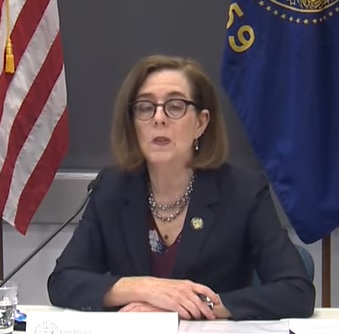

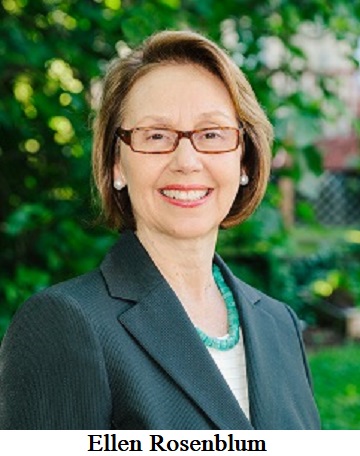

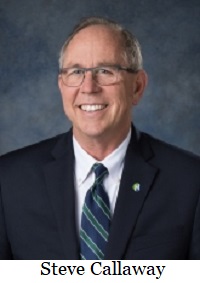



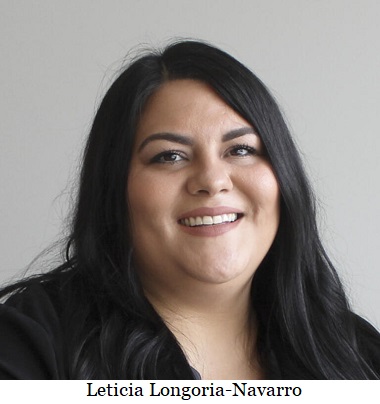

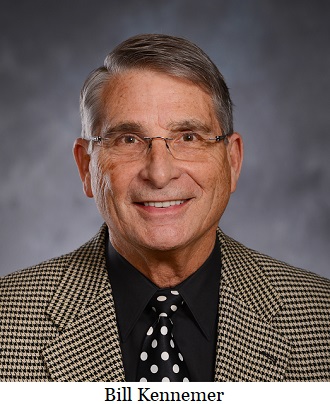








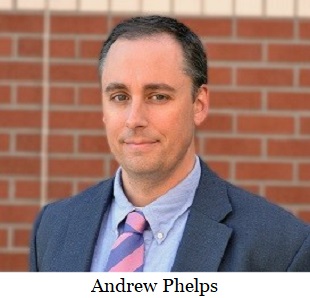




 Higher crude oil prices result in higher pump prices since oil is the main ingredient in gasoline and diesel. On average, about 53% of what we pay for in a gallon of gasoline is for the price of crude oil, 12% is refining, 21% distribution and marketing, and 15% are taxes, according to the U.S. Energy Information Administration.
Higher crude oil prices result in higher pump prices since oil is the main ingredient in gasoline and diesel. On average, about 53% of what we pay for in a gallon of gasoline is for the price of crude oil, 12% is refining, 21% distribution and marketing, and 15% are taxes, according to the U.S. Energy Information Administration.
